Background
Hello, my name is Mălina, and I’m from Timișoara, Romania! I’m studying Medicine and Surgery at University of Bologna, having just started my second year here. This is my story as an international student!
My Passions Through My High School Years
I’ve been doing debate for six years now, and I’m still pursuing this activity. In 10th grade and part of 11th grade, I was part of the Timiș County Students’ Council, where I served as vice president. However, I had to resign in 12th grade because it became too much to balance.
I also did some volunteering at Save the Children (Salvați Copiii) and other medical Romanian associations, though those were short-term projects; I mostly volunteered at different events rather than sticking with a single cause.
I tried joining the Red Cross, but it didn’t quite work out for me, because I wanted something more medical. So I applied to volunteer with the County Hospital in Timișoara, and I ended up volunteering in the Emergency Department. And that experience completely confirmed that medicine is my career path.
Besides that, I’ve done ballet for years. It’s my other passion, the artistic side of me that balances out the science and medicine part, keeping me grounded.
It was amazing. Since we weren’t medical students, we weren’t allowed to perform actual medical procedures, except once or twice, when patients agreed, and we were guided through basic steps like drawing blood. Mostly, we transported blood samples, accompanied patients to different wards, and helped with small tasks anyone could do without prior training.
The best part was shadowing the doctors and seeing how everything worked in real time. It was also quite exhausting because we had to complete 30 hours per month, which doesn’t sound much, but shifts were either 6 or 12 hours long. Since I couldn’t go during school days, I spent almost every weekend at the hospital. I learned a lot and had a genuinely great time doing it.
How was the experience of volunteering in the ER?
Choosing Bologna: How Italy Won Over the Netherlands
I’ve always known I wanted to be a doctor. People often ask me how I decide, and honestly, I don’t really know how to answer. It feels like I was born with that idea and never once changed my mind throughout high school.
As for studying abroad, that decision was almost set from the beginning. My parents always encouraged me to study internationally, arguing that I’d develop much more. I knew I wanted to stay in Europe, and my main options were the Netherlands or Italy. In the Netherlands, medical studies are taught in English only for the first three years, after which everything switches to Dutch. Dutch isn’t exactly an easy or friendly language, and while I could probably learn it, mastering it well enough to take medical exams felt like too big a burden, especially given how demanding medicine already is.
Italy seemed like a better option. The only downside was that the entrance exam takes place in September, which is incredibly late. My parents didn’t want me to risk losing a year in case I didn’t get in, so they told me to also prepare for the Romanian medical exam as a backup plan.
So I studied for both medical exams in parallel. Luckily, the Italian exam had a lot in common with the Romanian one, so it was quite manageable. I was initially placed on the waiting list, but a week later, I got in.
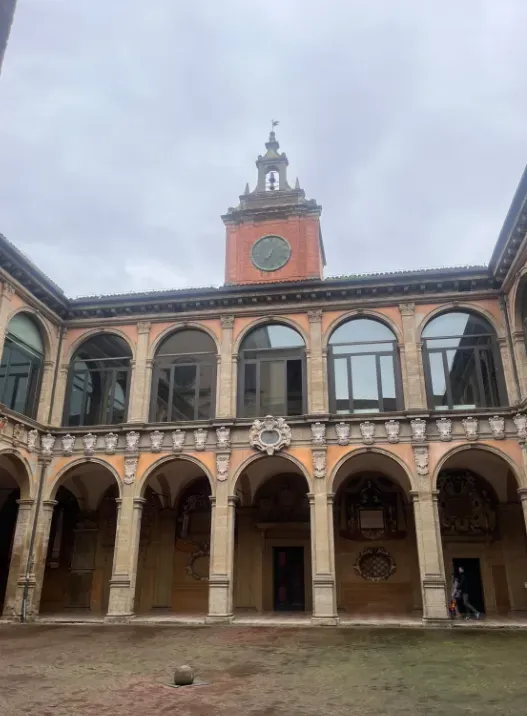
Application Process
What to Expect
The application process is actually very simple: what really matters is the entrance exam. You register for the exam, take it, and if you pass, then you submit your documents, meaning your high school diploma and a few additional papers. They don’t ask for a CV, recommendation letters, or even a Cambridge certificate, but it is still useful to have it nonetheless.
However, the exam isn’t easy: it includes logic, critical thinking, general knowledge, math, physics, biology, and chemistry. To prepare for it, I searched for a private mentor who gave me weekly exercises and assignments; then we’d discuss what I didn’t understand and go through the logic behind the questions. Now, looking back, I realise I could’ve found all that information by searching the Internet, but it was helpful nonetheless.
The Logic Behind the Exam
The questions were very different from the Romanian standard, and I mean that in the way they make you think, not just memorise facts. For example, instead of asking something direct like “What is a eukaryotic cell?”, they build a small scenario around it, forcing you to reason through the situation to reach the right answer. Even the straightforward questions are structured differently as they focus more on understanding concepts, especially in chemistry, rather than memorising formulas or structures. So it’s less about what you know and more about how you think. Since being a doctor means navigating through complex and very specific situations daily, they want to see from the beginning if your thinking is flexible.
On top of that, the scoring system makes it tricky. For every correct answer, you get 1.5 points, but for every wrong one, you lose 0.4 points. So if you’re unsure, it’s better not to answer. Time management is also tough: 60 questions in 90 minutes.
The exam system is numerus fixus (study programs with a limited number of available places). Every year, around August, they publish the official call for applications, listing how many spots each university offers for EU and non-EU students.
For EU students, the process is quite simple: you take the exam, then list your preferred universities in order. For non-EU students, however, it’s a bit different. You take the exam for a specific university. If you pass, great; if not, that’s it, you can’t use your score elsewhere.
The spots are also a lot fewer. For example, at Bologna, for English programmes, there are around 130 spots for EU students but only about 20 for non-EU students. It’s very competitive. This year, there were around 11,000 to 13,000 candidates across all of Italy, and only about 1,200 spots in total. In some universities, fewer people apply, so it’s slightly easier. But in others like Bologna, Milan, or even Rome, competition is fierce.
About the Spots Allocated for Medicine Students
Inside the Classroom
The courses are honestly very interesting; examples are here.
What I really like about studying here is how organised everything is. They tell you exactly what you need to learn: what’s covered in lectures is precisely what you’ll be tested on. Another thing is how focused the curriculum is. Here, you take fewer subjects, but you study each in depth; for example, I have maybe three subjects per semester, but study every three or four times a week, continuously. I think this is to let professors go deeper into each topic, giving us a broader understanding and a more connected view of the material.
Moreover, the subjects I’m studying are coordinated and structured by department. When we study the cardiovascular system, both anatomy and physiology professors coordinate, teaching topics that relate to each other instead of each professor doing their thing. It’s so much more coherent and makes learning feel logical.
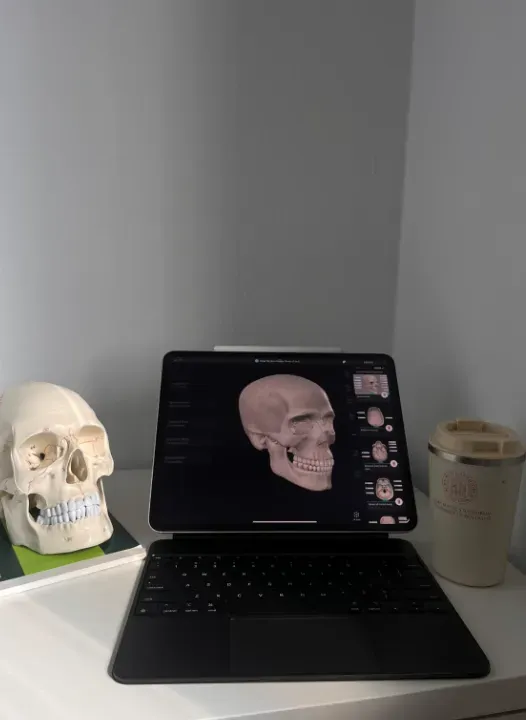
Another thing: most exams are oral and individual, like a conversation. The professor (who is a university researcher and often leads real scientific projects at the university’s labs) asks a specific question and expects you to go beyond it by connecting ideas, linking different topics, and explaining the concept as a whole. I find that much more engaging than a multiple-choice exam because you really have to know the material. Secondly, to hold a proper conversation with the professor, you need to master the subject well enough to talk about it almost as if you were their peer. Despite not having a standard grading paper, I think it’s a brilliant way to evaluate students.
For example, as we’re studying about the musculoskeletal system, we go to this lab during which we literally get a box of bones in front of you and study them piece by piece. We are helped to identify structures, we are asked questions and everything is just very interactive! It’s great that we start practising in hospitals from the third year of college and we are introduced so early to this system!
Last year, things were different. The focus was mainly on basic sciences like biology and chemistry, so we didn’t have that many practical sessions. Now, in the second year, we finally get to apply what we’ve learned. This semester we’ll even start Surgical Skills, where we’ll learn how to tie surgical knots and perform sutures, draw blood. It finally feels like medicine!
About Laboratory Work

A Bitter Pill to Swallow
One issue I’ve noticed with the Italian academic system is that it lacks stability. The schedule changes every week, and because of that, sometimes I can't make it to my ballet classes. It’s not terrible since the classes usually fall around the same hours, but it definitely doesn’t give you a sense of stability. It’s not a huge problem, but it makes it impossible to plan your schedule at the beginning of the semester.
Still, in a way, that flexibility is a good thing. It allows the professors to adapt the schedule to what we’re currently studying. They never place a lab before we’ve covered the necessary theory in class, so the constant changes actually ensure that, when we reach a certain lab, we already have the background knowledge to understand it properly.
Fees and Living Expenses
Tuition Expenses
Tuition costs themselves aren’t very high: the maximum you can pay is around €3,500/ year, but usually you don't end up paying more than €3,000. However, the amount can be reduced depending on your family income, and in Bologna’s case, the reductions aren’t handled by the Italian state directly but by regional associations.
For instance, Bologna is in the Emilia-Romagna region, so you apply to the Emilia-Romagna regional association, which decides what kind of support you qualify for. Depending on your financial situation, you might have your tuition fees fully waived, receive monthly housing assistance (about €1,000), or get discounts at student restaurants and canteens.

How I Found Housing
Rent, on the other hand, is expensive. During my first year, I paid €850/month, but I lived alone and in a good area. There are shared apartments where you can rent just a room and live with others, which is a great option for later years when you already know people.
The stressful thing with the admission process is that the exam takes place on September 17, and the results arrive around October 10. After that, each university starts whenever it wants. Bologna starts quite early; for example, I got my results around October 10, and classes began on October 27, literally just two weeks later. So the exam takes place after finishing 12th grade, and you have such a short time to find accommodation and provide all the other necessary documents.
Luckily, some family friends who my mother has worked with before helped us a lot with information about documents and housing. The university does provide some partner housing agencies, and they’re decent: the dorms are great in terms of conditions, they have gyms, nice rooms, everything, but they definitely take advantage of students who are desperate to find a place. Paying €1,200 for a 17-square-meter room far from the university area is insane!
Living in a Student City
Other than housing, though, living costs are lower than in Romania. Food, social life, and entertainment are much cheaper. Bologna is a student city (out of 400,000 residents, about 100,000 are students), so the city is designed around student life: you’ll find cheap restaurants, affordable bars and clubs, and plenty of social events with student discounts.
Plus, travel in Italy is surprisingly inexpensive. You can take day trips easily, for example, from Bologna to Pisa, Florence, or Milan. A train ticket to Milan costs around €15, which is pretty cheap and allows you to travel easily!
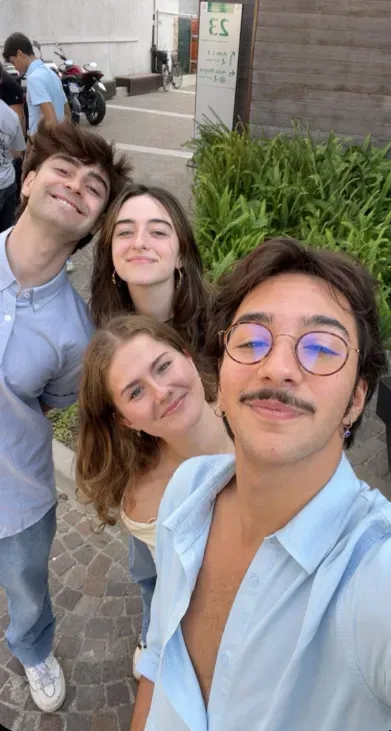
Student Life & International Community
We didn’t have an Introduction Week, but there are, however, a few student associations that organise meet-and-greets or Q&A sessions where older students explain how the system works.
That said, it’s not hard to make friends. It’s a bit harder outside university, since you mostly interact with people from your own course. There are around 120 people in my year, so you’re bound to find your group. There are also many international students who are actively looking for friends, and even the Italian students in our class are very open and friendly. I’m quite extroverted, so I never had problems meeting people.
I think you need patience and a lot of perseverance. The Italian system is very unfriendly in many ways. Bureaucracy is intense: most offices don’t speak English, so you need patience to deal with paperwork, stand in lines, and navigate procedures. On top of that, perseverance is essential not just for paperwork, but also for finding housing, keeping up with studies, and even making friends. Patience is especially crucial in the first years until you get used to the system and understand how it works.
What skills do you think are necessary for someone to succeed in studying Medicine in Italy?
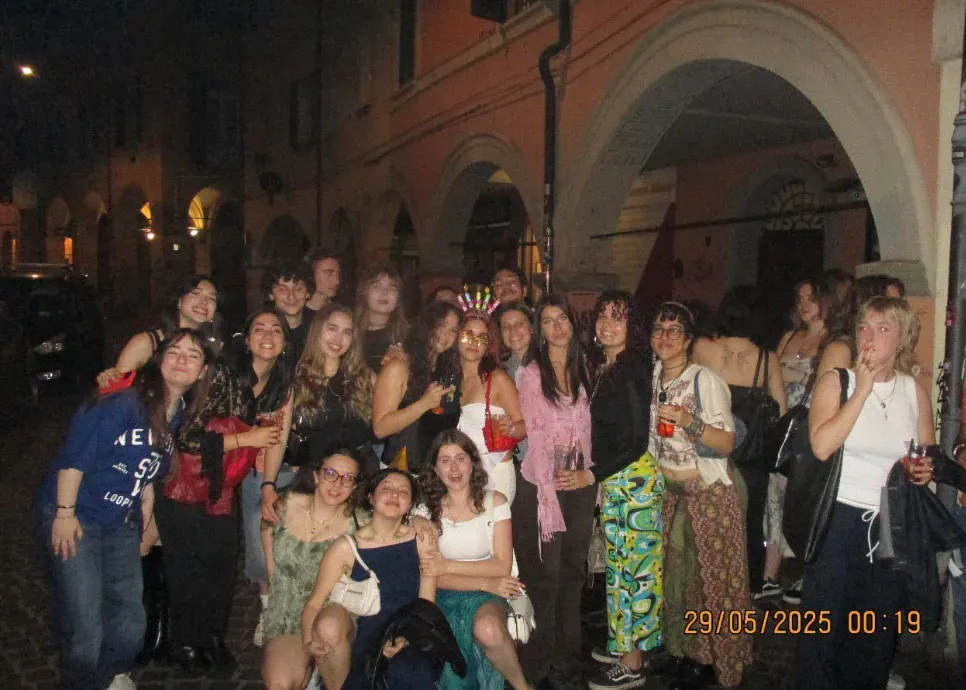
Advice for You!
If I were to give advice to other students wanting to study in Italy, I’d say: take full advantage of everything it offers. Academically, professors are extremely open. Everyone is involved in research and happy to let students participate in their labs. Make the most of your professors as they are highly educated and experts in their fields.
Secondly, take advantage of the country itself. I came to Italy, a beautiful and famous country for its beauty, and it would be a shame to spend six years here without exploring it.
Always try to step out of your comfort zone. For example, I made an effort not to stay only with Romanian peers. I pushed myself to speak English, meet other students, and learn from people around me both good and bad experiences, all of them contributing to growth. I think studying abroad should come with openness to other cultures and learning from the ways other people live their lives.
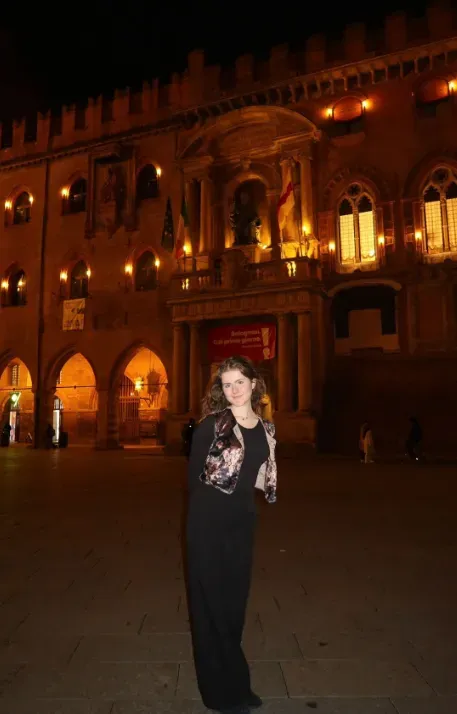
Do You Need to Speak Italian?
All courses, lectures, and exams are in English. However, since it’s medicine, starting next year (so starting third year) we’ll have practical hospital rotations, and that’s where Italian becomes necessary. Even if you speak with the doctors in English, which is mandatory for them to know, you still have to interact with patients, and not everyone speaks English.
That’s why the university requires students to reach at least a B1 level in Italian by the middle of the second year.
For me, it wasn’t hard at all to reach that level. Even though they are provided, I chose not to take the university’s language course because it’s held in large groups of 20–30 people, which isn’t very effective for me. Also, for Romanian students, learning Italian from Romanian is much easier than learning it through English, since the two languages are so similar both grammatically and lexically. So, piece of advice: try to find the best method of studying for you!
When it comes to study tips, I try to do most of my studying on weekends. During the week, I usually don’t study more than two hours a day, but on weekends, I dedicate six to eight solid hours on both Saturday and Sunday.
My strategy during the semester is not to pressure myself to know every single detail as if I had an exam the next day. I focus instead on understanding the main concepts and getting a general grasp of the material. When exam season comes, I add the details and review everything thoroughly, just like building a pyramid. There’s no point in memorising something perfectly now only to forget it two weeks later when I’ll have five more chapters to study.
My Study Tips!




